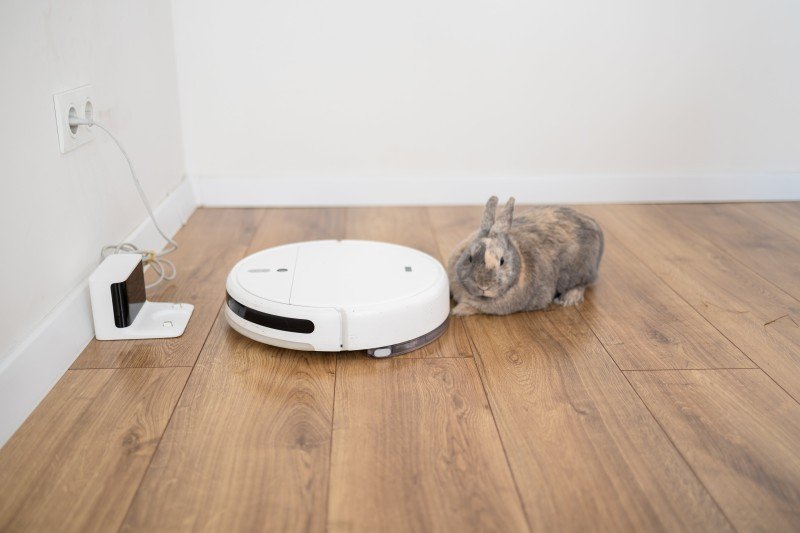The Rise of Autonomous Vacuums: Revolutionizing Home Cleaning
In the age of innovation, household tasks are becoming significantly automated, and among the most noteworthy advancements in this world is the autonomous vacuum. These intelligent cleaning robotics are created to alleviate the drudgery of standard vacuuming, making them popular among time-strapped families. This post checks out the development, functionality, benefits, and limitations of autonomous vacuums, together with a comparison of some of the leading designs on the market today.
What is an Autonomous Vacuum?
An autonomous vacuum, also called a robotic vacuum cleaner, is a small, automatic device that navigates through your home to clean floors without human intervention. Geared up with sensing units, video cameras, and advanced software application, these vacuums can identify barriers, avoid stairs, and optimize cleaning paths. They generally run from a rechargeable battery, returning to their charging stations when their power is low or when cleaning tasks are finished.
Key Features of Autonomous Vacuums
Smart Navigation:
- Utilizes sensing units and algorithms to map the environment.
- Can navigate complex layouts and avoid challenges.
Scheduling:
- Allows users to set cleaning times.
- Can operate when your house is empty, ensuring very little interruption.
Connectivity:
- Many models connect to Wi-Fi, enabling app control and integration with smart home systems.
- Users can personalize settings, check cleaning status, and receive alerts through mobile applications.
Suction Power:
- Varies in between designs; some offer adjustable suction settings for different floor types.
- High-end models include powerful suction efficient in getting family pet hair and deep dirt.
Floor Type Adaptability:
- Capable of cleaning carpets, hardwood, tiles, and more.
- Certain models specialize in customized cleaning for several surfaces.
The Advantages of Using Autonomous Vacuums
1. Time-Saving
One of the most considerable benefits of autonomous vacuums is the amount of time they save. Instead of investing hours pushing a traditional vacuum, house owners can set robotic vacuums to tidy while they are participated in other activities.
2. Constant Cleaning Schedule
With the ability to arrange cleansings, these vacuums make sure that spaces are routinely cleaned up, causing a cleaner home overall. Routine cleaning helps preserve indoor air quality, particularly for families with allergies or asthma.
3. Smart Home Integration
Numerous autonomous vacuums can be incorporated with smart home systems for seamless operation. Property owners can manage their vacuums by means of voice commands through devices like Amazon Alexa or Google Assistant, boosting user benefit.
4. Compact Design
The slim profile of these devices enables them to clean up under furniture, such as couches and beds, where conventional vacuums often can not reach.
5. Pet-Friendly
For family pet owners, autonomous vacuums can be a game-changer, as they are often equipped with specialized functions for getting pet hair and dander, contributing to a cleaner home environment.
Limitations of Autonomous Vacuums
In spite of their numerous benefits, autonomous vacuums also have limitations:
1. Limited Deep Cleaning
While these vacuums efficiently keep cleanliness, they might not change the effectiveness of a deep tidy supplied by conventional vacuums, particularly for greatly stained areas.
2. Capacity Constraints
Most autonomous vacuums featured little dust bins that require to be emptied often, specifically in larger homes or homes with animals. Read the Full Guide can be an inconvenience for some users.
3. Navigation Challenges
Although navigation innovation is continually enhancing, some designs may battle with particular layouts, particularly complicated spaces with numerous obstacles or very little spaces.
4. Cost Point
While prices have become more available, high-end designs can still be rather pricey, positioning a barrier for some consumers.
Contrast of Top Autonomous Vacuum Models
| Model | Smart Features | Battery Life | Suction Strength | Price Range |
|---|---|---|---|---|
| iRobot Roomba 980 | App Control, Voice Assistant | 120 minutes | 1700 Pa | ₤ 700 - ₤ 900 |
| Roborock S6 MaxV | Advanced Mapping, Connectable | 180 minutes | 2500 Pa | ₤ 600 - ₤ 800 |
| Ecovacs Deebot Ozmo | Mopping, Smart Home | 110 minutes | 1500 Pa | ₤ 450 - ₤ 700 |
| Neato Botvac D7 | Laser Navigation, Custom Zones | 120 minutes | 2000 Pa | ₤ 800 - ₤ 900 |
| Shark IQ Robot | Self-Emptying Base, Smart Map | 90 minutes | 1500 Pa | ₤ 400 - ₤ 600 |
Significant Takeaways
- Smart Features: Consumers need to focus on designs using robust smart features for benefit and efficiency.
- Battery Life: A longer battery life is helpful for larger living spaces.
- Suction Strength: Depending on home requirements, varying suction power can considerably affect cleaning effectiveness.
FAQs about Autonomous Vacuums
Q1: How do I preserve my autonomous vacuum?
A: Regular maintenance consists of cleaning the brushes, clearing the dustbin, and examining for obstructions. In addition, keeping the sensors clean up will help maintain navigation precision.
Q2: Can robotic vacuums clean carpets and carpets?
A: Yes, many robotic vacuums are designed to efficiently clean both hard surfaces and carpets. Nevertheless, suction power might vary based upon the design.
Q3: Do robotic vacuums require Wi-Fi?
A: While lots of autonomous vacuums gain from Wi-Fi connectivity for app control and updates, some designs can operate separately without a wireless connection.
Q4: How often should I run my robotic vacuum?
A: It depends on your living scenario, however running it numerous times a week is often recommended, particularly for homes with family pets.
In conclusion, autonomous vacuums represent a considerable advancement in home cleaning technology, appealing benefit and performance. While these gizmos might not totally change standard vacuum, they are undoubtedly practical in maintaining a tidy living environment. As technology continues to develop, the future of home cleaning looks appealing, and these devices are at the leading edge of the revolution.

